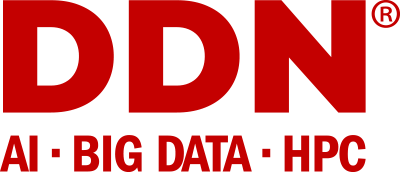Venues of Euro-Par 2019

Important Locations
The Conference takes place at different locations in the city of Göttingen. Here is an overview of all locations:
- Aula of the University
Wilhelmsplatz 1, 37073 Göttingen
Google Maps - Alte Mensa - Main Venue
Inculding Adam-von-Trott-Saal and Emmy-Noether-Saal
Wilhelmsplatz 3, 37073 Göttingen
Google Maps - SUB/HG, Paulinerkirche
Papendiek 14, 37073 Göttingen
Google Maps - Heine Haus
Papendiek 16, 37073 Göttingen
Google Maps - Restaurant Bullerjahn
Markt 9, 37073 Göttingen
Google Maps
There are two main locations: Aula and the Alte Mensa at Wilhelmsplatz and with the SUB/HG, Paulinerkirche and the Heine Haus at Papendiek 14/16.
If you are not sure where your next talk will take place, please feel free to ask at the registration desk.
Göttingen in a Nutshell
GÖTTINGEN is
- a city, not very large in size, deep in heart of Germany located in the northern mountain range and nevertheless perceived worldwide
- a multidisciplinary research campus that spreads through the whole town
- history of science and living, cutting-edge research and teaching
- hip, vibrant, cosmopolitan, and at the same time cosy
- like a blooming garden, in particular in August
All this adds up to the unique Göttingen Spirit.
Scientists and students from all over the world are characterizing the urban scenery. The distances are short. The city is green and colorful. Everyone is relaxed and friendly. In Göttingen you can feel like home and carry out research efficiently.
AN EXCELLENT SETTING TO CELEBRATE THE 25th ANNIVERSARY OF EURO-PAR.
Save
the Date
August
26 - 30, 2019
Get an idea of Göttingen

A BRIEF HISTORY OF GÖTTINGEN'S RESEARCH CAMPUS
Since the University was inaugurated in 1737, the scientific principles have been characterized by the spirit of the Enlightenment. Freedom of science and the commitment to excellence in research and teaching have been among its fundamental values. Outstanding notables, such as Christian Gottlob Heyne, Albrecht von Haller, Georg Christoph Lichtenberg in Göttingen shaped the first century of the university. The methodological principles of Göttingen's research have always been fundamental and experimental research and the absence of censorship.
Göttingen is strongly connected with scholars like Carl-Friedrich Gauss, Wilhelm Weber and Friedrich Wöhler. During the first 100 years, the University of Göttingen consolidated its reputation as one of the most important mathematical and scientific centres in the world. In addition, there was and still is an important faculty of humanities, a theological faculty and a highly esteemed university medicine, which is respected as well beyond the borders of Göttingen.
The Göttinger Sieben were seven professors at the University of Göttingen, among them the Brothers Grimm. In 1837, they dared to offer political resistance against the state power. They caused a great stir throughout Europe at a time when people began to rebel against absolutism and the corporative society.
At the beginning of the 20th century, David Hilbert, whose assistants among others were Max Born and Emmy Noether, drew attention to mathematical models of calculating machines and to the theory of formal languages, which today form the basis of computer science and computer technology. During this time Göttingen developed into a centre of scientific geniuses, including Karl Schwarzschild, James Franck, Ludwig Prandtl, Peter Debye, Werner Heisenberg, and Emil Wiechert. They attracted scientists and students from all over the world. In 1933, this mecca of mathematics was destroyed by the Nazis in campaigning against Jews.
After the Second World War, the University of Göttingen was the first German university to reopen its teaching activities. The university and the science location grew continuously, not last due to the location of high-ranking institutions of top-level research and innovative companies. The Göttingen Campus was founded in 2010 as an association of major scientific institutions in Göttingen. This research campus is outstandig in Germany.
The following institutions belong to the Göttingen Campus
- University of Göttingen
- University Medical Center
- Göttingen State and University Library
- Max Planck Institute for Biophysical Chemistry
- Max Planck Institute for Dynamics and Self-Organization
- Max Planck Institute for Solar System Research
- Max Planck Institute for Experimental Medicine
- Max Planck Institute for the Study of Religious and Ethnic Diversity
- DPZ German Primate Center
- DLR German Aerospace Center
- Göttingen Academy of Sciences and Humanities
- and numerous associated organizations
IN THE WORLD OF TODAY

THE GÖTTNGEN NOBEL PRIZE WONDER
Göttingen takes place in the CVs of more than 40 Nobel Prize winners. Manfred Eigen (1967, chemistry), Erwin Neher (1991, medicine) and Stefan Hell (2014, chemistry, above) still live in Göttingen. They are citizens of Göttingen and are often seen in everyday life.

THE GÖTTINGER SIEBEN ARE OMNIPRESENT
The Nobel Prize winner for Literature, writer, graphic artist and sculptor Günter Grass, published his works in Göttingen. He designed the G7 monument and donated it to the city and the University of Göttingen. A sculpture of his famous Butt - German short for turbot - stands in front of the SUB. "Der Butt", turned up 1977, is one of Grass' famous novels. It deals with the history of mankind from the Neolithic to the present, and in particular the relationship between man and woman, on several narrative levels.

HIGH PERFORMANCE COMPUTING IN GÖTTINGEN
In 1970 the Georg August University of Göttingen together with the Max Planck Society founed the GWDG - Gesellschaft für wissenschaftliche Datenverarbeitung mbH Göttingen, a joint venture to share a computer and IT competence centre. In almost 50 years, teh GWDG got long-term experience in the operation of various computing clusters. Currently a large number of cluster systems are used by different research groups on Göttingen Campus. The University of Göttingen, together with her IT Service Provider GWDG is going to ignificantly expand her position as an HPC center. the concept is based on three pillars:
In 2016, the University of Göttingen successfully applied as a location for the HLRN - Norddeutscher Verbund für Hoch- und Höchstleistungsrechnen, North German Association for High Performance Computing. The HLRN operates a distributed supercomputer system with just round about 250,000 computer cores for cutting-edge science and research in seven northern German states. In addition to the existing provider ZIB - Zuse Institute Berlin the University of Göttingen opereates this supercomputer since 2018.
The German Aerospace Center (DLR), the University of Göttingen and the GWDG signed a letter of intent to cooperate deeper in computing- and data-intensive research, and the operation of supercomputers. Aim of the agreement is a closer cooperation in High Performance Computing, expected as a key technology for scientific, and industrial applications, and technical progress.
The construction of a new joint data centre, largest new building project of the University of Göttingen, is also part of the Göttingen HPC concept. The University Medicine Göttingen and Max Planck Society are also involved. The GWDG will provide all participating institutions with additional computing and storage capacities for research, teaching, work, health care and administration.
HISTORICAL ROOTS

THE GAUSS AND WEBER MONUMENT IN GÖTTINGEN
In front of the historical university library, short called SUB, where some tracks of Euro-Par 2019 will take place, stands a working replica of the Gauss Weber telegraph, which reminds of its creators, the mathematician Johann Carl Friedrich Gauss and the physicist Wilhelm Eduard Weber. A second copy of the telegraph stands in front of the historical observatory where Gauss lived and taught. Messages can be exchanged between the two stations using the Morse code.




SCHOLARS OF THE MATHEMATICAL MECCA
James Frank, Werner Heisenberg, David Hilbert, Emmy Noether worked downtown in Bunsenstraße which still exisits.

DIE GÖTTINGER RECHENMASCHINE G1 - THE GÖTTINGEN CALCULATOR G1
In 1952, Heinz Billing, physicist and pioneer in the development of computer systems and data storage devices, built the first electronic computer, called Göttingen 1. It was developed for the astronomer Ludwig Biermann. The computer could perform two operations per second and had a drum memory for 26 words of 32 bits each. Later he designed the successor model G2, whose planning began before the completion of the G1. G2 was finished in Garching near Munic because the Max Planck Institutefor Physics and Astrophysics moved there. Same the model G3, which was in operation from 1960 to 1972. All three computers entered decimal numbers via a modified typewriter, the computer translated these entries into dual numbers and output the result in decimal numbers. Later, paper tape was used. The model G3 had as main memory a magnetic core memory with a cycle time of 10 μs, which consisted of 4096 words of 42 bits each.










